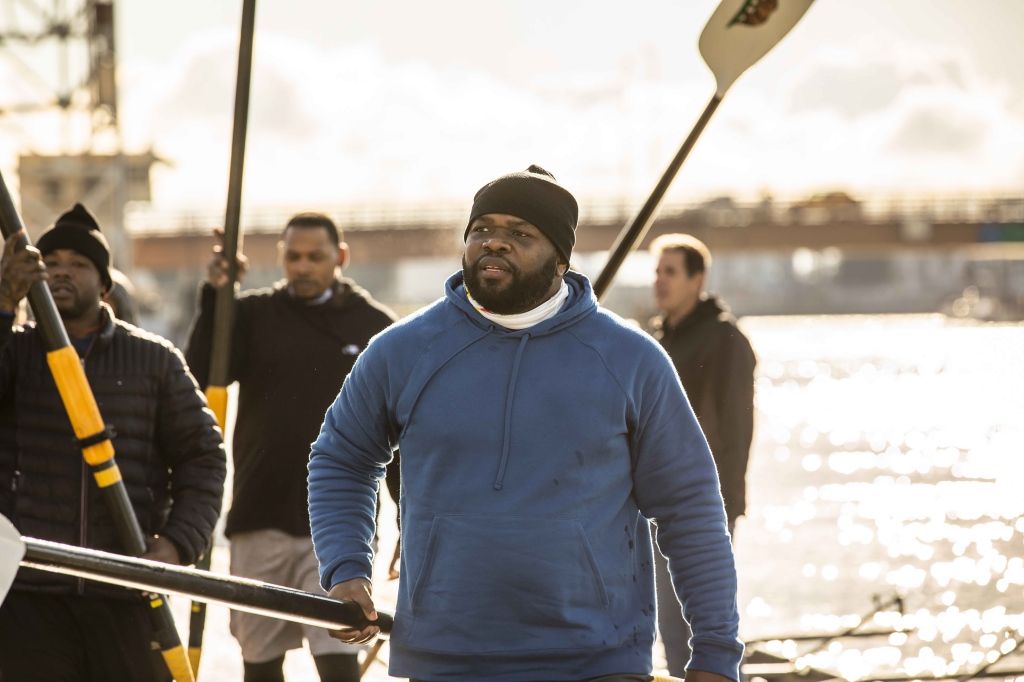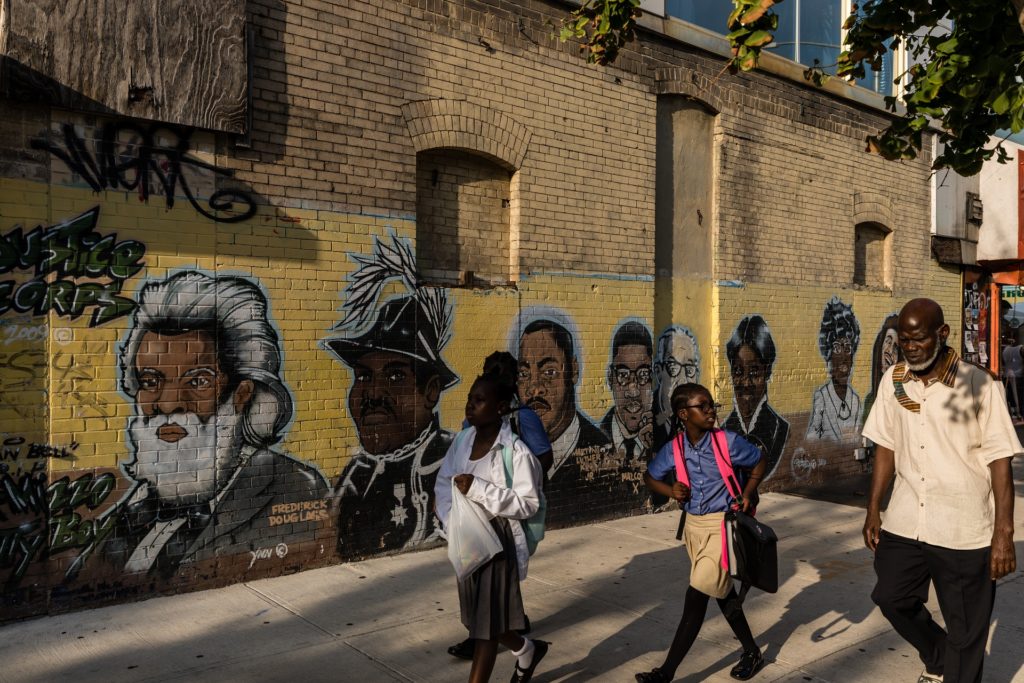Brooklyn author’s historic rowing team reunites for documentary film

Author and rower Arshay Cooper and his teammates on location for the documentary in Oakland. Photos courtesy 50 Eggs Films © 2019 Richard Schultz
In the late 1990s, Arshay Cooper, now of Brooklyn, lived in Chicago, where he starred on America’s first all-Black public high school rowing team.
Cooper, 38, is the author of a memoir, “A Most Beautiful Thing,” which has just been adapted into an eponymous documentary, directed and produced by Mary Mazzio, a former Olympic rower.
The book and the film illustrate Cooper’s precarious journey: Cooper’s mother battled drug addiction, and the team featured rival gang members. Mazzio says it was crucial to highlight the perils of “intergenerational trauma” and how “talent is equally distributed, but access and opportunity aren’t.”
